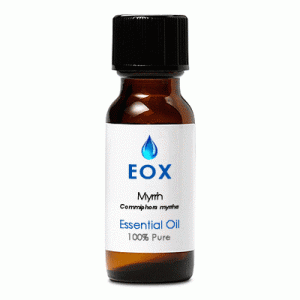|
Characteristics:
The oil is a pale yellow to dark amber oily liquid with a warm, sweet-balsamic, slightly
spicy-medicinal odor. It blends well with frankincense, sandalwood, benzoin, oakmoss, cypress,
juniper berry, mandarin, geranium, patchouli, thyme, mints, lavender, pine and spices.
Principal Constituents: These are naturally occuring in the essential oil.
- heerabolene
- limonene
- dipentene
- pinene
- eugenol
- cinnamaldehyde
- cuminaldehyde
- cadinene
General Actions:     Open Symbols Key
Open Symbols Key
Anticatarrhal, antiphlogistic, astringent, balsamic,
carminative, cicatrizant, emmenagogue, expectorant, fungicidal, revitalizing, sedative, stimulant
(digestive, pulmonary), stomachic, tonic, uterine, vulnerary.
Safety:
 
Non-irritant, nonsensitizing, possibly toxic in high concentration.
Primary Therapy Agent:
Athlete's foot, chapped and cracked skin, hemorrhoids, piles, irritated and inflamed skin, mouth and
gum infections, ringworm, toothache, teething pain, wounds bronchitis, amenorrhea, leucorrhea, pruritis.
Secondary Therapy Agent:
Cuts/sores, eczema, wrinkles, mature skin, arthritis, asthma, catarrh, chronic coughs, coughs, laryngitis,
hoarseness, sore throat, throat infections, indigestion, flatulence, loss of appetite, thrush, candida.
Important Note: The information on Florapathics.com is
only provided for educational purposes, and further research should be done on each essential oil to be assured
of its proper usage for each individual. Aromatherapy is not meant to be a replacement for care under a qualified
health professional, but should be considered a complimentary modality.
|










